The Year in TV Monsters
Television in 2018 gave us plenty to be scared of, from literal horrors (please stop smiling, Teddy Perkins) to more figurative terrors (hello, capitalism)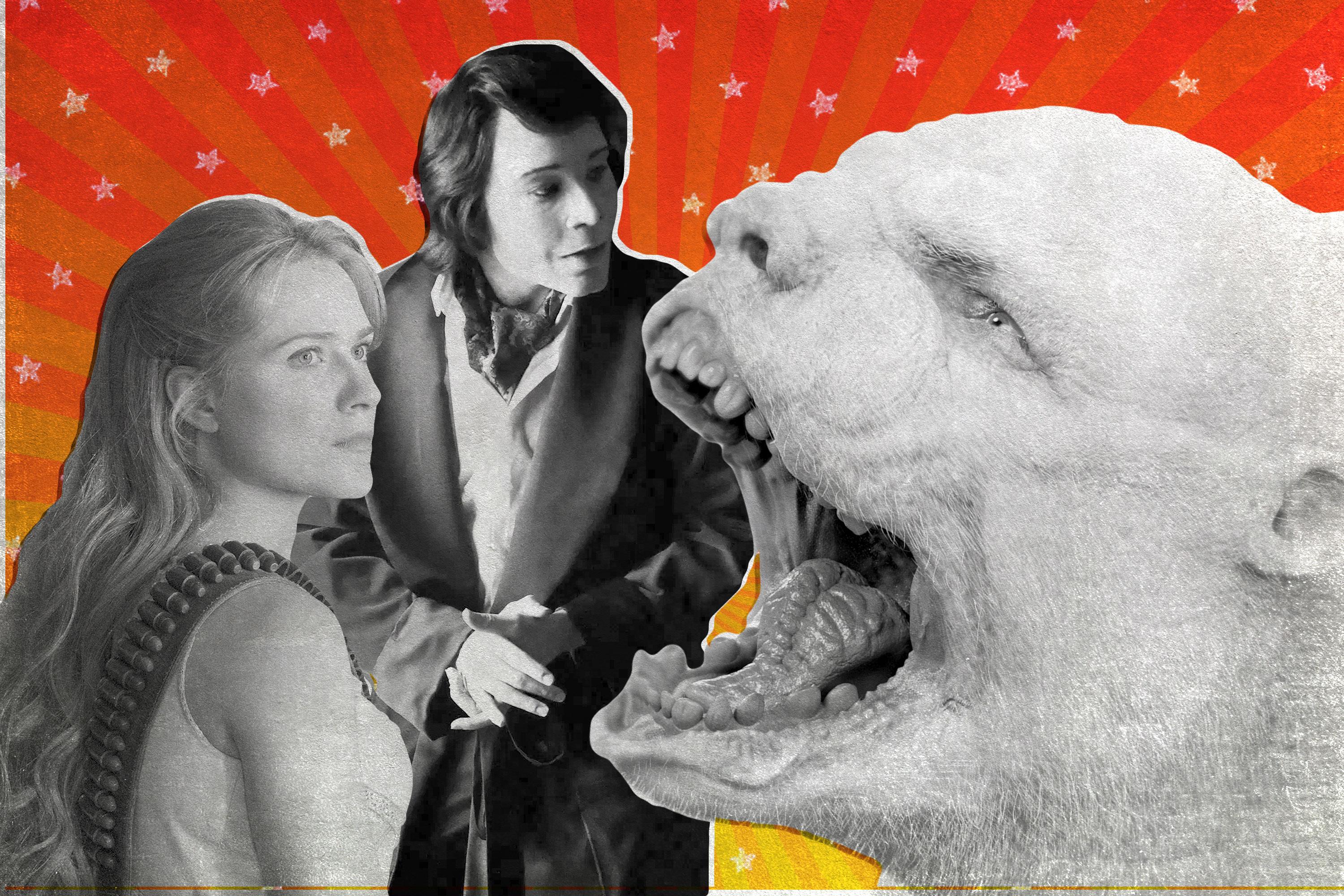

Monsters can make a series. I mean, what’s Game of Thrones without the looming, existential threat of the White Walkers; Stranger Things without the Demogorgon lurking in the Upside Down; The Good Place without Michael’s demonic meddling; Breaking Bad without the truly appalling Heisenberg?
Granted, not all shows need monsters, especially not literal ones: I don’t believe Mad Men would’ve been as respected if, in the middle of an episode, New York was attacked by a kaiju. (Coincidentally, I now can’t stop thinking about Don Draper fighting a kaiju.) But TV monsters—literal manifestations or otherwise—can be as essential as a gripping narrative, likable protagonists, and budding romances.
We had no White Walkers or Upside Down creatures in 2018, but it was still a good TV year, at least by monster standards. Below, we celebrate 11 iconic monsters on our screens this year and discuss what made them so distinct and effective—and most importantly, so monstrous—in their own ways.
The Tuunbaq (The Terror)
What’s worse than getting trapped in the Arctic during the middle of a failed 19th-century British Naval expedition? Getting trapped in the Arctic while being hunted by the Tuunbaq. Quick bio: The Tuunbaq is a monster of Inuit mythology, which attacks The Terror’s Naval officers throughout the 10-episode season and, while killing them, also captures their souls. It’s basically a huge, swole polar bear: If the Tuunbaq was ever photographed alongside a group of regular polar bears, it’d probably stick out a lot like this giant-ass cow.
But the Tuunbaq isn’t just there to freak out viewers; it represents nature fighting back against the hubris of the British explorers who deigned to conquer the land—and, considering the British’s history of colonization across the globe, the monster also serves as the last line of defense for the Inuit people who associate with it. I could go on about the symbolic nature of this beast saving the Inuits from potential white oppressors, or I could provide this GIF of that one British dude who thought he could control the monster by ritualistically cutting off his own tongue.

Tuunbaq: 237; Naval officers: 0.
Teddy Perkins (Atlanta)
“Great things come from great pain,” Teddy Perkins (played by Donald Glover in unshakable whiteface) tells Atlanta’s resident stoner Darius (Lakeith Stanfield), who was just trying to get a piano he saw up for grabs online from the man’s gothic estate. That is a terrifying thing to hear from anyone—but it’s way worse to hear from a person in a red velvet jacket who has a soft, creaking voice, and skin that appears to be covered in caulk.
Teddy feels less like a person than the ghost of Michael Jackson, but rest assured: He’s a very real threat. By the end of the episode, Teddy tries to murder Darius and stage the whole thing to look like a home invasion—before his plans are thwarted by his brother Benny, who then promptly kills himself. You may have some sympathy for Teddy, as he’s endured a childhood of abuse and hardship for the sake of fame and greatness. But there’s no denying that Teddy Perkins and his vacant, soulless stare are the last things you’d want to see turning the corner of a mansion.
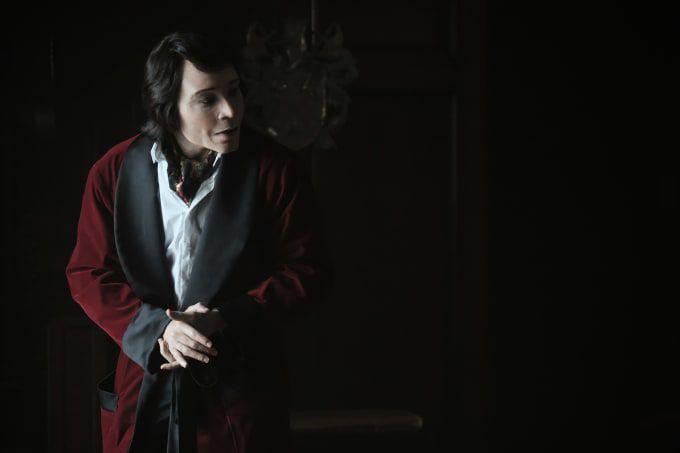
Villanelle (Killing Eve)
Time and again in its eight-episode first season, Killing Eve demonstrated that its hired killer, Villanelle (Jodie Comer), was capable of monstrosities, even when they were not necessarily part of the job. (Like that time she purposefully knocked down a little girl’s serving of ice cream in the pilot, an affront to ice cream lovers everywhere.) But if there’s a moment that illustrated how terrifying Villanelle’s inherent bloodlust was, it was the final moments of the third episode, “Don’t I Know You?”
Eve (Sandra Oh) and her colleague Bill (David Haig) are tracking down Villanelle in Berlin. Bill spots Villanelle and then follows her across town and into a nightclub. It’s clear to the audience—from the brief expressions on Villanelle’s face—that she’s leading him into a trap. So you aren’t surprised when the tables are turned on poor Bill—you’re utterly horrified, as this disturbing look of satisfaction spreads across Villanelle’s face.
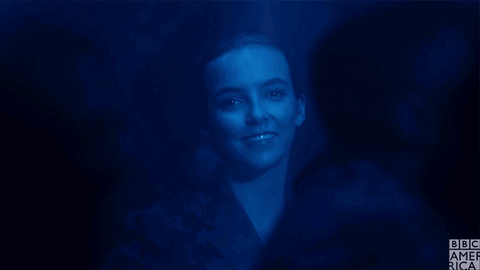
Villanelle strikes fast like a lion pursuing its prey, darting through dancers and stabbing Bill before he’s able to move even a few steps. She revels in the moment, as she does in other kills throughout Killing Eve. More than anything, this moment is a reminder that—while the show is very GIF-able and humorously dry—there’s still a monstrous killer at its center.
The Bent-Neck Lady (The Haunting of Hill House)
Ghosts are constantly looming on the screen in The Haunting of Hill House—so much so that the show’s Twitter account has been steadily revealing all the ones that were hidden in the frames. But the most iconic specter of Netflix’s first great horror series is the recurring appearances of The Bent-Neck Lady. She’s as terrifying as the moniker would suggest.
The Bent-Neck Lady haunts Nell, the Crain family’s youngest daughter, throughout her life—from the moment her family made the ill-fated decision to purchase a notoriously haunted house (seriously, WHY?!) up until her suicide as a young adult. You can understand why this thing has given Nell a lifetime of trauma: its neck is, indeed, bent, and the bone is protruding in such a way that it’s hard to shake the image once you’ve seen it. It’s given me nightmares—now it’s your turn!
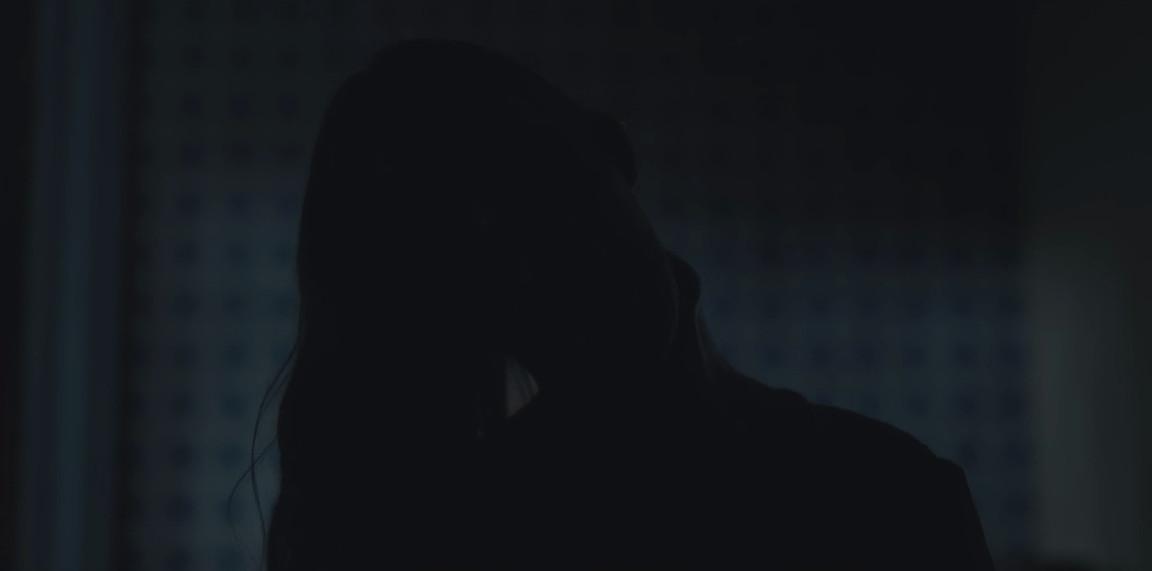
Dolores Abernathy (Westworld)
What a difference a season can make. The first episode of HBO’s sci-fi hit presented Dolores (a great, Emmy-nominated Evan Rachel Wood) as a robo-victim of an amusement park, trapped in a perpetual cycle of rape and murder at the hands of the park’s wealthy guests. But as the odious humans were hunted and killed by the increasingly sentient hosts in the second season, Dolores transformed into the cutthroat leader of this robot uprising—one who was capable of awful things herself.
Dolores wanted to be the judge, jury, and executioner for other hosts—ones who didn’t agree with her methods or, in her view, weren’t equipped to take on the “real” world. That included poor Teddy (James Marsden), her wholesome cowboyfriend who just wanted to make out and admire the countryside. One of her worst crimes: She forcefully altered Teddy’s cognition, stripping away his empathy and increasing his aggression. He became, in effect, her personal Terminator, which worked for a time, until he shot himself.
By the end of the season, Dolores has freed herself from the park, but at great personal cost and with few hosts joining her. Given that she adopted the worst impulses of the human guests, Dolores has nobody to blame but herself. Westworld’s robot revolution will continue to be televised, but for Dolores’s sake, hopefully she’ll workshop her methods before other hosts suffer similarly bleak fates.
Saul Goodman (Better Call Saul)
The Saul Goodman (Bob Odenkirk) we meet in Breaking Bad isn’t exactly a great guy: He’s a lawyer who wears funky suits and serves the sketchiest people in the greater Albuquerque area. Aside from being a very effective snake oil salesman, he didn’t have much depth. Of the many virtues of the excellent prequel series Better Call Saul, one of its finest is learning just how empty and deprived the man once known as Jimmy McGill really is.
At the show’s onset, Jimmy is a man with some redeeming qualities: At times, he tries to do the right thing, and clearly wants to impress and live up to his older brother Chuck (Michael McKean). But trying to be “good” is something Jimmy has crept further away from over the series, a devolution that reached its nadir at the end of the fourth season. This season, Jimmy leveraged Chuck’s tragic suicide with crocodile tears in court and read his brother’s letter in his hearing to get reinstated as a lawyer. He took sick pleasure in his fabricated emotions causing actual emotions from the people on the board. “Did you see that one sucker?” Jimmy tells his on-again, off-again lover, Kim (Rhea Seehorn). “That one asshole was crying. He had actual tears!”
Kim is horrified, as we all are, and Jimmy’s final words on the year—“S’all good, man”—ring monstrously hollow.
The Protomolecule (The Expanse)
On The Expanse—pound for pound the best sci-fi series on television—humans living across the solar system are so intent on fighting each other that they ignore the fact they’re facing potential extinction at the hands of a mysterious, extraterrestrial biological substance called the Protomolecule. It is to The Expanse what the White Walkers are to Game of Thrones: the existential threat that could wipe everyone out.
The interesting thing about the Protomolecule is that, while it may serve its own enigmatic agenda, its most horrific moments on the show were the direct result of humans trying to weaponize it (i.e. the Eros asteroid station incident at the end of the first season). As such, the Protomolecule feels like a pretty clear stand-in for nuclear warfare. Thankfully, by the midway point of the show’s third season, humans have stopped infighting enough to consider the Protomolecule threat and what it could entail—especially after the thing created an interdimensional portal in the middle of the solar system. (It’s a long story.)
The best (worst?) of the Protomolecule is yet to come, but a surreal vision experienced by our main protagonist James Holden (Steven Strait) suggests the substance was responsible for wiping out other forms of life across the universe. I shudder to think what else we might learn about the Protomolecule when The Expanse returns on its new home, Amazon Prime.
Philip and Elizabeth Jennings (The Americans)
Six seasons of very stressful subtext about how marriage (and, well, spying) is hard work made myself and other viewers of FX’s The Americans root for the Jennings family. That is, of course, despite the fact they were Russian spies living in America and frequently killing people—including sweet old ladies! It’s a complicated relationship between show and viewer—nonetheless, I rooted for Elizabeth (Keri Russell, robbed of an Emmy) and Philip (Matthew Rhys). But holy hell, they are horrifying.
Elizabeth always had a stronger stomach for the nastier parts of spycraft—part of the reason Philip spent the majority of the final season square-dancing and running their travel agency business into the ground. It wasn’t fair for Elizabeth to shoulder such a stressful workload on her own, and I do sympathize with her burnout. When most people feel burned out at work, though, it doesn’t result in excessive bloodshed, as it certainly did with Elizabeth.
And yet it was Philip who might’ve been responsible for the most messed up moment of the season—and perhaps the entire show. When his best friend and FBI neighbor Stan (Noah Emmerich) finally uncovered the truth about the family in the finale, Philip smartly talked his way out of trouble in a parking garage—allowing himself, Elizabeth, and Paige (Holly Taylor) to escape. He mostly did that by lying about their work, saying they never killed anyone, and clearly leaning on the bond he and Stan had forged over the years.
But then, he said this: “I don’t know how to say this, but I think there’s a chance Renee might be one of us. I’m not sure.” The last thing he told his best friend was that his new wife may be a spy—but only maybe. He ruined a man’s domestic life forever, with no solid proof. That is cold.
Capitalism (Lodge 49)
At one point in AMC’s surreal Lodge 49, an actual shark bites Dud (Wyatt Russell). Other than that brief moment of physical terror, however, everyone on the show deals with a more amorphous—but no less terrifying—monster: capitalism.
The fallout of late capitalism, the mid-2000s recession and its devastation on America’s middle class are what haunts Dud and the rest of the show’s characters, who’ve all meandered through life in Long Beach, California, futilely trying to pick up the pieces. Dud’s twin sister Liz (Sonya Cassidy) works at a Bennigan’s-like restaurant to pay off mounting debt; Dud is constantly paying off loan sharks before he’s bitten by the literal shark; another character at the titular lodge is laid off from an uncomfortably familiar media gambit: a pivot to video.
It’s extremely bleak stuff, not least of all because the first season ends without most of the characters in a much better place. The havoc wreaked by this monster will take more than 10 episodes to recover from.
Mary Wardwell (Chilling Adventures of Sabrina)
Not all monsters are traditionally scary: some are icons. For example, I absolutely love Chilling Adventures of Sabrina’s Mary Wardwell (Michelle Gomez), a high school teacher of Sabrina Spellman (Kiernan Shipka) who is killed and impersonated by a demon that goes by Madame Satan. Sometimes, she has a craving for human flesh.
Even so, Sabrina doesn’t play the character for scares: Ms. Wardwell is delightfully campy. When she orders a pizza … she eats the delivery boy. The overtly misogynistic principal of the school spends the majority of the first season inappropriately hitting on Ms. Wardwell, and finally gets his comeuppance in the finale when she has him over for [clears throat] dinner.
I know her name is Madame Satan and that she doesn’t have Sabrina’s best interests in heart, but I can’t help it—I am all in on Ms. Wardwell. May she continue to eat predominantly terrible men for years to come.
The Whisperers (The Walking Dead)
In its ninth season, The Walking Dead did the most shocking thing in years: It became … pretty good again! Despite the haphazard exit of main protagonist Rick Grimes, the series embraced some of the quieter yet more fascinating aspects of post-apocalyptic life—namely, how one goes about rebuilding a society and learning to live among the undead.
The midseason finale seemed to be another retread of familiar drama: the group was surrounded by a bunch of zombies, and heroics were required to escape. But then, as Jesus (Tom Payne) began mowing them down, this happened:
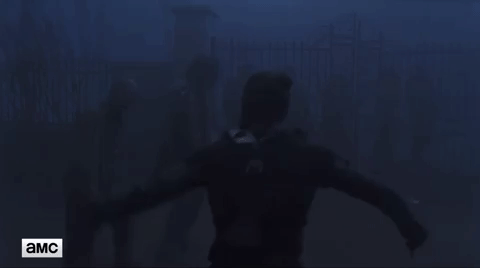
No, the zombies didn’t unexpectedly learn evasive maneuvers: This was the introduction of the show’s newest antagonists, the Whisperers. “You are where you do not belong,” the man told Jesus with—surprise—a whisper, which made it all the more chilling. The Whisperers’ whole deal is wearing the zombies’ skin to blend in with them—all the better to attack unsuspecting humans.
The Walking Dead has had a villain problem in seasons past, but the Whisperers provide something new: threat via zombie immersion, and the promise to lean into the horror elements of a show that’s lacked genuine suspense for a while. (It also helps that their whispering is, frankly, quite unsettling.) Jesus’s death was a solid preview of the Whisperers, which I’m looking forward to seeing more of when the show returns in February, with The Walking Dead being semi-watchable for the first time in what feels like an eternity.

